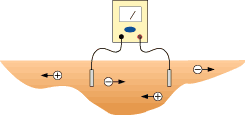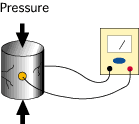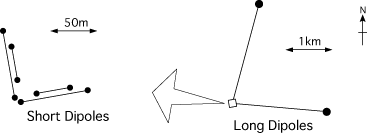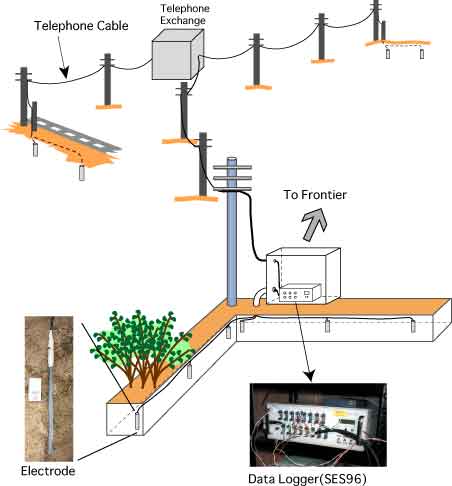|
Geoelectric Potential
Observation |
| Within the surface layer of the
earth, weak electric current, called telluric current, is flowing.
It is also called geoelectric potential difference as it is actually
measured by electric potential difference between electrodes
at different sites. |
 |
| VAN
Method |
|
| It is known in laboratory experiments
that electric current is generated before fracture in rocks under
load. To apply this phenomenon to the "earth" was the
motivation of the VAN-method. |
 |
| Main point that made the VAN method unique compared
with conventional methods is their efforts for noise rejection.
To discriminate signal from noise, it is necessary to install
at each station at least two measuring short dipoles (30~200
m) with different length in two orthogonal orientations (total
of at least four dipoles) and at least two long dipoles (~a few
to several km). By this dipole arrangement, noise from electrode
instability, rain fall and nearby sources can be eliminated.
VAN method can be said as a telluric current monitoring method
in which noise rejection techniques are systematically employed.
Even so, there is still much to be improved for the rejection
of noise from far away sources. |
 |
| Telluric Current
(Geoelectric Potential Difference) Measurement |
| Pb-PbCl2 pipe non-polarizing electrodes (40 cm
in length and 3 cm in outer diameter) are buried at 2 m depth.
Data are sampled at 10 or 1 sec interval and telemetered once
a day to RIKEN IFREQ through public telephone. For long dipole
observation, NTT telephone cable facilities are used. |
 |





